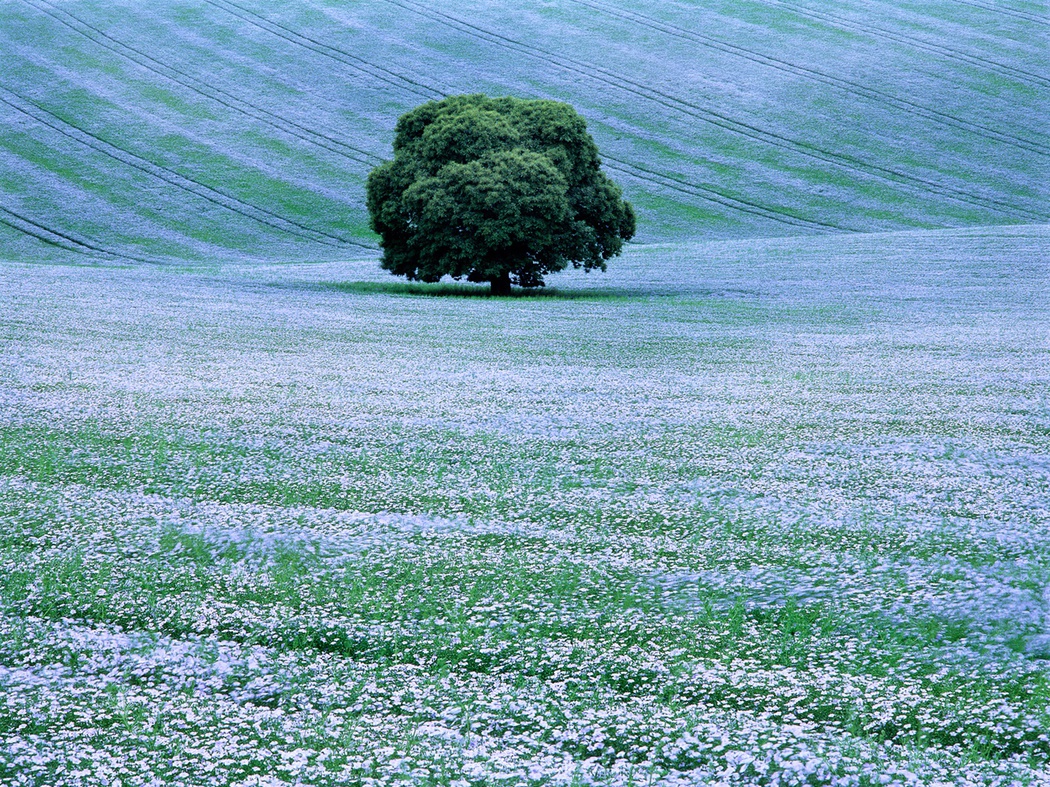
This dear tree is one of my best friends in the West Country. I have known it (although 'it' is too poor an address for such a chum) for more than twenty-five years. I have seen this fellow through every stage of the seasons, in so much leaf as to surely weigh an extra ton, and dressed in shimmering bronze with the side light of an October afternoon. I have stopped and greeted my tree in fog, driving rain, sleet and snow, in the fiercest of gales and in the stillest air, during the furnace heat of high summer. We are pals, this tree and I.
With all this being so, how could I not place the dearest of trees right into the middle of the frame? Anything else would have been unthinkable. I remember looking through the 6cm x 6cm ground-glass screen and realizing that this could not be a square image; it was clear to me that to have dropped the tree into a square of blue which was so intense and widespread, would have resulted in the tree being overwhelmed and literally sunk in a sea of blue.
There are interchangeable backs with my camera that allow for a 6cm x 6cm format to be exchanged for a 6cm x 6.45cm one. When I feel I am warming to an image, like the hide and seek games we played as children, there is a wonderful feeling of brand new discovery, and as I looked anew at the scene now framed by a rectangle, it began to work.
There were patches of green amongst the blue flax and I became distressed about this. The blue is broken up by strips of green on the back hill; the diagonal banding gives a sense of depth by breaking the continuity of blue in the foreground. Then the horizontal line where this seam takes place seemed unsatisfactory. I was wondering whether to wait and come back in a day or so in the hope that the flax might have flourished enough to outweigh the patches of green. A modicum of sun arrived and brushed the top of the tree. In a moment these considerations left me, and I made an exposure.
I look at this photograph and am always thankful for that splash of light: it delivered the slightest shadow below the tree, while, thankfully, the very lowest branches did not appear to have merged with it. Had they done so, the tree would not have identified itself sufficiently and this is most especially true of this shortest of tree trunks. Another five thousand leaves on the near branch and the stub of the trunk would have been concealed.
Charlie Waite
Landscape | The Story Of 50 Favourite Photographs
Film Fuji Velvia
Camera Hasselblad 6cmx6cm
Lens 150mm
Exposure 1/4 f.32
Filters Polariser
FilmFujiVelvia CameraHasselblad6cmx6cm Lens150mm Exposure1/4secf.32 FiltersPolarizer
